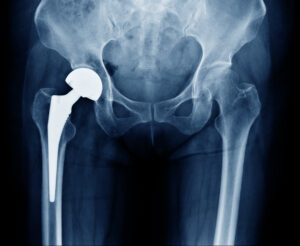News & Blog
Understanding Hip Pain: Causes, Statistics and Solutions

Hip pain is a prevalent issue affecting many individuals, significantly impacting their daily lives. This article delves into the causes of hip pain, provides relevant UK statistics, and explores potential solutions to help alleviate this common discomfort.
Causes of Hip Pain
Hip pain can result from various factors, including:
- Injury: Accidents, falls, or sports injuries can lead to hip fractures or dislocations causing significant pain.
- Overuse: Repetitive activities or prolonged standing can strain the muscles and joints in the hip.
- Arthritis: Osteoarthritis and rheumatoid arthritis are leading causes of chronic hip pain, especially among older adults. The conditions affect the hip joint.
- Bursitis: Inflammation of the bursae, which are fluid-filled sacs cushioning the hip joint, can cause pain.
- Tendonitis and Tendinopathy: Overuse can also lead to tendon inflammation around the hip.
- Structural Abnormalities: Conditions such as hip dysplasia or impingement can result in pain due to abnormal joint structures.
- Hip Joint Surgery: Total joint replacement is one of the most common orthopaedic procedures carried out.
UK Hip Pain Statistics
– Prevalence: Approximately 3.2 million people in the UK suffer from hip osteoarthritis. This condition is a significant contributor to hip pain and can severely impact mobility and quality of life.
– Impact of Arthritis: Around 10 million people in the UK have some form of arthritis, with hip osteoarthritis being a common subtype. This widespread condition is a major cause of disability and can significantly limit daily activities.
– Surgery Rates: The number of hip replacement surgeries in the UK has been steadily increasing. In 2017, there were about 100,000 hip replacement surgeries performed, primarily due to severe arthritis. This number reflects the growing need for surgical intervention to address debilitating hip pain.
Solutions to Hip Pain
- Exercise and Physical Therapy:
– Strengthening Exercises: Building strength in the hip muscles can provide better support for the joint. Exercises such as squats, lunges, and leg raises are beneficial.
– Flexibility Exercises: Stretching exercises like the hip flexor stretch, piriformis stretch, and IT band stretch can improve mobility and reduce pain.
– Low-Impact Activities: Swimming, cycling, and walking are excellent options that minimize stress on the hips while enhancing overall joint health.
- Medication:
– Pain Relievers: Over-the-counter medications such as paracetamol or nonsteroidal anti-inflammatory drugs (NSAIDs) can help manage pain and reduce inflammation.
– Corticosteroid Injections: For severe pain, corticosteroid injections into the hip joint can provide significant relief.
- Lifestyle Modifications:
– Weight Management: Maintaining a healthy weight reduces the strain on the hip joints, helping to alleviate pain.
– Activity Modification: Adjusting daily activities to avoid excessive strain on the hips can prevent further discomfort.
- Assistive Devices:
– Orthotics: Custom shoe inserts can provide better hip alignment and reduce pain.
– Walking Aids: Sticks or walkers can help distribute weight more evenly and reduce stress on the hips.
- Surgical Options:
– Hip Arthroscopy: Minimally invasive surgery can address issues like labral tears or impingement.
– Hip Replacement: For severe cases of arthritis or joint damage, hip replacement surgery can provide significant pain relief and improve function.
Conclusion
Hip pain is a common and impactful issue that can significantly reduce quality of life. Understanding its causes and exploring various treatment options is crucial for effective management. By combining exercise, medication, lifestyle changes, and, if necessary, surgical interventions, individuals can find relief from hip pain and regain their mobility. If you are experiencing hip pain, consult with a healthcare professional to determine the best course of action for your specific situation.
